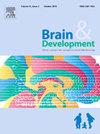外显子跳跃治疗杜氏肌营养不良的进展及展望。
IF 1.3
4区 医学
Q4 CLINICAL NEUROLOGY
引用次数: 0
摘要
杜氏肌营养不良症(DMD)是一种由DMD基因变异引起的遗传性进行性肌肉疾病。目前正在开发促进肌营养不良蛋白产生或改善肌营养不良蛋白缺乏引起的病理的DMD治疗方法。促进肌营养不良蛋白产生的疗法被称为疾病修饰疗法,包括使用反义寡核苷酸(as -oligo)的外显子跳跃疗法。该疗法使用as寡核苷酸抑制外显子内剪接增强子序列的功能,并从mRNA中去除外显子,从而将框外缺失(如DMD中发生的)转化为框内缺失,并诱导功能性肌营养不良蛋白的表达。2016年,诱导51外显子跳跃的eteplirsen在美国获得了加速批准。诱导45和53外显子跳跃的AS-oligo目前也被应用于临床实践。诱导其他外显子跳跃的as -oligo有望在未来得到开发,以及更有效地作用的修饰核酸。然而,值得注意的是,在加速批准后,这些疗法在临床实践中的疗效评估仍然不足。此外,许多问题,如早期治疗的有效性和这些疗法与其他新型治疗药物的联合,需要考虑。因此,建立一个系统来跟踪治疗的长期疗效和安全性是很重要的。可能还需要考虑建立早期诊断系统。本文概述了DMD的外显子跳跃疗法的发展和未来的挑战,以及剪接开关疗法(一种利用AS-oligo控制剪接的疗法)的扩展,包括外显子跳跃疗法,用于其他疾病。本文章由计算机程序翻译,如有差异,请以英文原文为准。
Development and future prospects of exon-skipping therapy for Duchenne muscular dystrophy
Duchenne muscular dystrophy (DMD) is an inherited progressive muscle disease that is caused by variants in the DMD gene. The development of therapies for DMD that promote dystrophin protein production or ameliorate dystrophin deficiency-induced pathology is currently underway. Therapies that promote dystrophin production are known as disease-modifying therapies, and include exon-skipping therapy using antisense oligonucleotides (AS-oligo). This therapy suppresses the function of a splicing enhancer sequence within an exon using AS-oligo and removes the exon from the mRNA, thereby converting an out-of-frame deletion (as occurs in DMD) to an in-frame deletion and inducing the expression of functional dystrophin protein. In 2016, eteplirsen, which induces exon 51 skipping, received accelerated approval in the United States. AS-oligo that induce the skipping of exons 45 and 53 are also currently being applied in clinical practice. AS-oligo that induce skipping of other exons are expected to be developed in the future, as well as modified nucleic acids that act more potently. Notably, however, the evaluation of the efficacy of these therapies in clinical practice after accelerated approval remains insufficient. In addition, many issues, such as the effectiveness of early treatment and the combination of these therapies with other novel therapeutic agents, need to be considered. It is therefore important to establish a system to follow-up the long-term efficacy and safety of treatment in the future. The establishment of an early diagnostic system may also need to be considered. The present review outlines the development and future challenges of exon-skipping therapy for DMD and the expansion of splice-switching therapy (a therapy that uses AS-oligo to control splicing), including exon-skipping therapy, to other diseases.
求助全文
通过发布文献求助,成功后即可免费获取论文全文。
去求助
来源期刊

Brain & Development
医学-临床神经学
CiteScore
3.60
自引率
0.00%
发文量
153
审稿时长
50 days
期刊介绍:
Brain and Development (ISSN 0387-7604) is the Official Journal of the Japanese Society of Child Neurology, and is aimed to promote clinical child neurology and developmental neuroscience.
The journal is devoted to publishing Review Articles, Full Length Original Papers, Case Reports and Letters to the Editor in the field of Child Neurology and related sciences. Proceedings of meetings, and professional announcements will be published at the Editor''s discretion. Letters concerning articles published in Brain and Development and other relevant issues are also welcome.
 求助内容:
求助内容: 应助结果提醒方式:
应助结果提醒方式:


